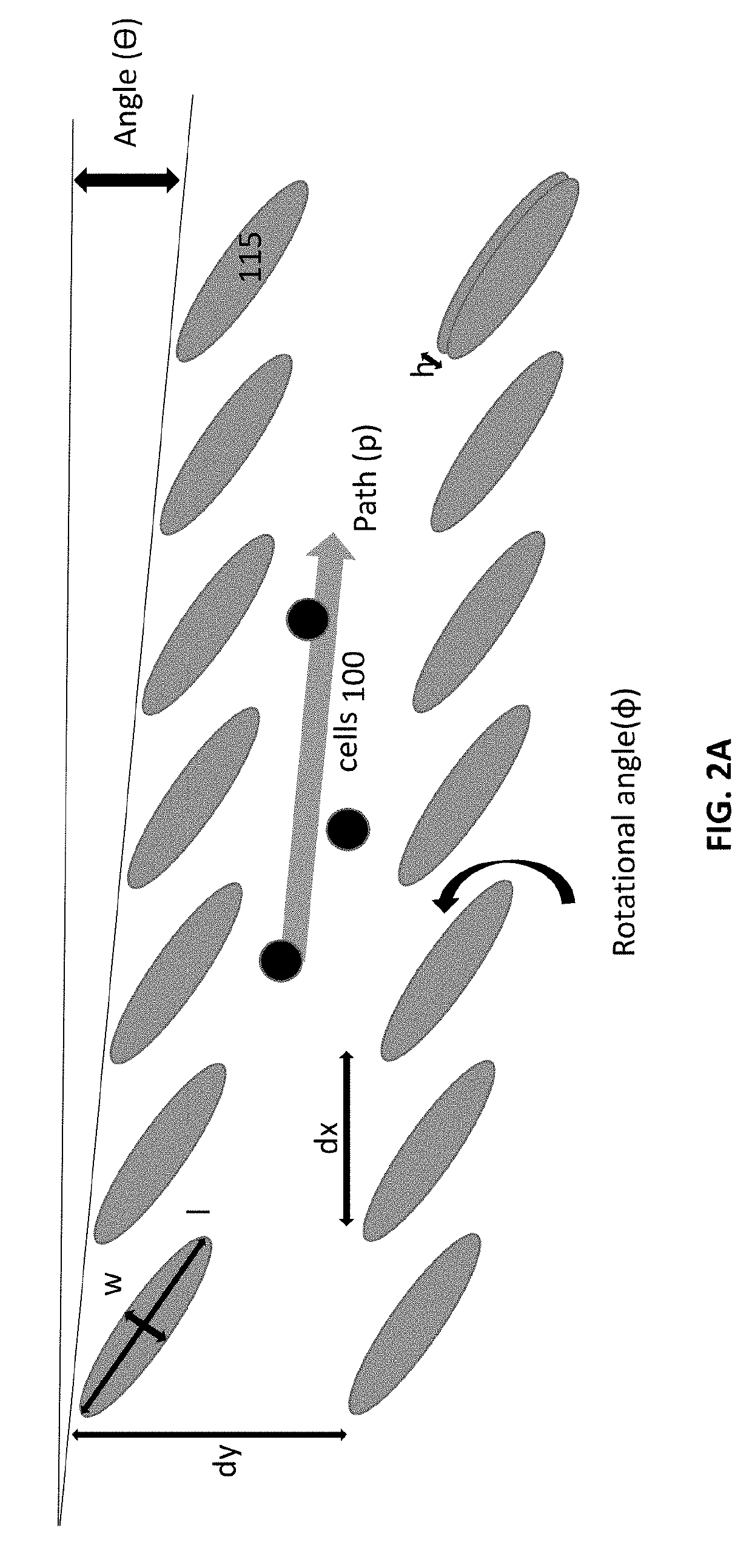Microfluidic Cellular Device and Methods of Use Thereof
a cellular device and microfluidic technology, applied in the field of microfluidic cellular devices, can solve the problems of low cell recovery rate, large sample size, non-functional cells, etc., and achieve the effect of rapid cell concentration and high cell recovery ra
- Summary
- Abstract
- Description
- Claims
- Application Information
AI Technical Summary
Benefits of technology
Problems solved by technology
Method used
Image
Examples
example 1
of Cells
[0123]Cells may be obtained from a biopsy, surgical resection, or from a blood draw. Cells may be collected and stored according to standard techniques known in the art.
[0124]In some embodiments, fine needle aspiration is performed using a sharp 25-gauge long needle (e.g., from Becton Dickinson). The length of the needle is selected based upon the location of the tumor within the patient. The needle is attached to flexible plastic tubing, which is connected to an aspirating syringe. The tip of the needle is advanced into the tumor, and aspiration is used to collect a sample of tumor cells. The procedure is monitored using imaging, e.g., sonography, or any other suitable technology.
[0125]Each sample is placed into a tube or flask with suitable cell culture media for mammalian cells (e.g., 5% fetal bovine serum (FBS); a fungicide and / or bacteriocide / antibiotic). Cells are cultured as a monolayer, e.g., in 6 well plates, grown to confluence, e.g., for 2 weeks or until reaching ...
example 2
hy to Produce Chambers
[0127]Unless indicated otherwise, devices were fabricated using standard soft lithography techniques known in the art.
[0128]Soft lithography may be used to generate polydimethylsiloxane (PDMS) structures described herein. In general, a mold (master) is produced by photolithography, wherein the mold represents the empty spaces of the microfluidic chamber. In this example, the master is solid for regions in which fluid will flow, and is empty in regions where posts are present. For example, photolithography techniques may be found in, e.g., U.S. Pat. No. 8,372,579.
[0129]PDMS is formed by mixing a component containing silicon hydride with another component containing a vinyl group. This mixture is poured into the master mold, and is allowed to cure, e.g., for an hour or two at 70° C. Once solidified, the PDMS structure can be peeled from the master mold (while remaining intact), and the master mold can be used again for making additional PDMS molds.
[0130]After rem...
example 3
ensional Printing of Chambers
[0132]Alternatively, 3D printing techniques can also be used to generate a master mold. This technology prints small amounts of a material (e.g., silicon, etc.), as multiple layers in an additive manner (as represented by a CAD file) to generate a three dimensional structure.
[0133]3D printing permits rapid prototyping, and can achieve a resolution suitable for some microfluidic devices. In this example, the master would then be used in the same way as in the previous example to create PDMS chambers.
[0134]Alternatively, a CAD file could be utilized to directly print the chamber structure (instead of the inverse structure). The structure could then be coated with PDMS to have desired surface properties. (Waheed, et al., Lab Chip (2016) 16:1993-2013.)
[0135]These examples are purely intended to be exemplary and are not intended to be limiting, as numerous different embodiments are understood to fall within the scope of the systems, methods, and devices discl...
PUM
 Login to View More
Login to View More Abstract
Description
Claims
Application Information
 Login to View More
Login to View More - R&D
- Intellectual Property
- Life Sciences
- Materials
- Tech Scout
- Unparalleled Data Quality
- Higher Quality Content
- 60% Fewer Hallucinations
Browse by: Latest US Patents, China's latest patents, Technical Efficacy Thesaurus, Application Domain, Technology Topic, Popular Technical Reports.
© 2025 PatSnap. All rights reserved.Legal|Privacy policy|Modern Slavery Act Transparency Statement|Sitemap|About US| Contact US: help@patsnap.com



